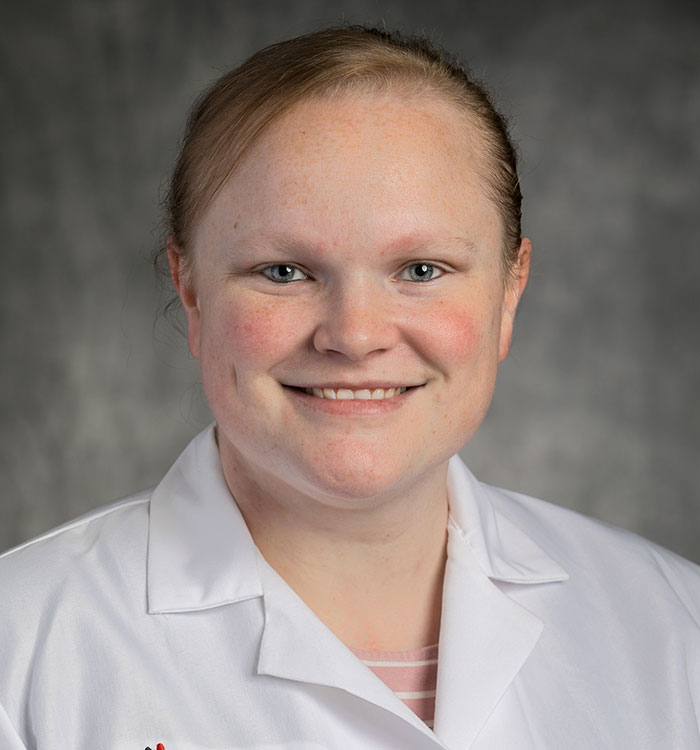Acute Kidney Injury in the Pediatric Population
September 30, 2020

UH Rainbow Babies & Children's merges optimal treatment with predictive analytics to improve outcomes
Innovations in Pediatric Nephrology | Special Issue October 2020
Critically ill children are at risk of developing acute kidney injury (AKI), historically known as acute renal failure. In a recent international study, the rate of severe AKI in patients was 11.6 percent of ICU admissions.1 Because AKI is associated with increased morbidity and mortality in the pediatric population, there has been an uptick in international research focused on prevention, early recognition and optimal treatment.
 Emily Joyce, MD
Emily Joyce, MDAt University Hospitals Rainbow Babies & Children’s Hospital, experts are working to identify predictors of AKI as part of their Quality and Safety Strategic Plan that launched in late 2019. “One of the four pillars of the plan is innovation,” says Charles Macias, MD, MPH, Chief of Pediatric Emergency Medicine and Chief Quality Officer at UH Rainbow and an Associate Professor of Pediatrics at Case Western Reserve University School of Medicine. “In it, we are looking at digital optimization, which includes creating decision support strategies to identify problems when early signals exist.”
IDENTIFYING RISK FACTORS AND NOVEL PREDICTORS
Diagnostic markers of AKI include an increase in serum creatinine and/or a decrease in urine output, representative of declining renal function. Common complications are dysregulated fluid and electrolyte status, including acidosis. One challenge of timely detection of pediatric AKI is that a key clinical marker, serum creatinine elevation, can lag in children suffering renal distress. That has prompted a search to uncover risk factors and biomarkers to speed diagnosis.
“If we can develop novel methods to screen patients who are at higher risk for acute kidney injury, we hope to decrease both its incidence and severity,” says Emily Joyce, MD, Division of Pediatric Nephrology at UH Rainbow Babies & Children’s Hospital and Assistant Professor of Medicine at the School of Medicine. “What we are finding is that the kids at greater risk are those whose conditions are critical and who require multiple nephrotoxic medications such as antimicrobials. We need to treat critically ill patients productively, but there are sometimes significant side effects to manage.”
Dr. Joyce returned to Cleveland in November 2019. “This is where I did my medical training and where I fell in love with pediatrics,” she says. “When I had the opportunity to come back to UH Rainbow, I was thrilled.”
Focusing her practice on clinical care, she brings a wealth of research experience in AKI and nephrotoxic effect on kidney function. “My goal is to integrate investigational study into my clinical practice,” Dr. Joyce says. “As part of that, I look forward to participating in department-wide quality initiatives to continually improve outcomes for patients with AKI.”
Currently, efforts are underway at UH Rainbow to proactively identify the effects of nephrotoxic medications. “We are developing tools to utilize predictive analytics to identify medications that may lead to early evidence of acute kidney injury,” Dr. Macias says. “This is one of our strategies to use artificial intelligence and machine learning to help understand how we can convert our data and analytics into ways to minimize potential unwanted outcomes in patients.”
OPTIMIZING TREATMENT
Pediatric nephrology experts at UH Rainbow Babies & Children’s Hospital offer a full spectrum of modalities to treat AKI, including optimizing hemodynamic and volume status, ensuring sufficient nutritional support, and providing renal replacement therapies when indicated, including:
- hemodialysis
- acute peritoneal dialysis
- continual renal replacement therapy
- dialysis in concert with extracorporeal membrane oxygenation (ECMO)
- dialysis in infants as small as two to five kilograms through teens and young adults
“With appropriate care, the vast majority of these kids get better,” Dr. Joyce says. “We offer renal support and medication management needed to restore function and minimize further injury.”
LONGITUDINAL MONITORING
Long-term renal sequelae following AKI is not yet fully understood. “Though serum creatinine typically returns to normal levels, we are still learning about potential lifelong consequences,” Dr. Joyce says. “It can take many years for chronic kidney disease to manifest after acute injury.” As a result, she schedules follow-up visits after hospitalization and recommends annual urinalysis at pediatric check-ups. “Even if renal function returns to normal, I think that children who have suffered prolonged or severe acute kidney injury warrant long-term monitoring, which can usually be provided by their primary care pediatrician.”
To make a referral or consultation with Dr. Emily Joyce, call 216-553-1947. You can also contact Dr. Joyce at Emily.Joyce@UHhospitals.org
- Joyce, Emily L., Kane-Gill, Sandra L., Priyanka, Priyanka., Fuhrman, Dana Y., Kellum, John A. Piperacillin/Tazobactam and Antibiotic-Associated Acute Kidney Injury in Critically Ill Children. JASN, Nov 2019, 30 (11) 2243-2251; DOI: 10.1681/ASN.2018121223


